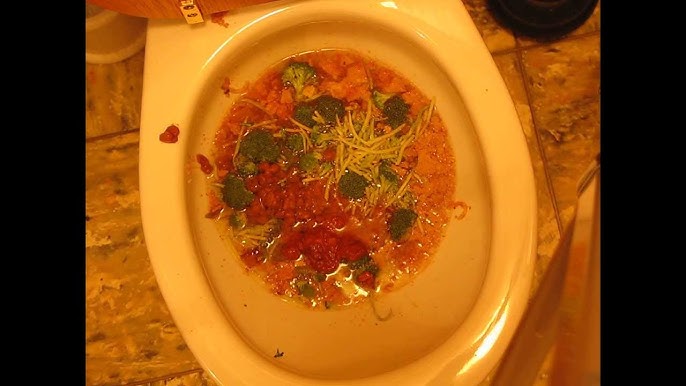Is it Suitable to Dispose of Food Waste in the Toilet?
Is it Suitable to Dispose of Food Waste in the Toilet?
Blog Article
What are your beliefs about What Can Happen If You Flush Food Down the Toilet??

Introduction
Many people are frequently confronted with the issue of what to do with food waste, particularly when it comes to leftovers or scraps. One common inquiry that occurs is whether it's fine to purge food down the bathroom. In this write-up, we'll delve into the reasons that individuals may take into consideration flushing food, the effects of doing so, and alternate techniques for correct disposal.
Reasons why people may consider flushing food
Absence of understanding
Some people may not know the potential injury brought on by flushing food down the bathroom. They may incorrectly believe that it's a harmless method.
Ease
Purging food down the toilet might look like a quick and simple solution to throwing away undesirable scraps, particularly when there's no neighboring trash bin readily available.
Idleness
Sometimes, people may just select to flush food out of large idleness, without taking into consideration the effects of their actions.
Repercussions of flushing food down the toilet
Ecological influence
Food waste that winds up in waterways can add to air pollution and damage water environments. Additionally, the water utilized to flush food can stress water resources.
Plumbing problems
Flushing food can cause blocked pipelines and drains, triggering expensive pipes fixings and inconveniences.
Types of food that ought to not be flushed
Coarse foods
Foods with coarse structures such as celery or corn husks can obtain tangled in pipelines and cause clogs.
Starchy foods
Starchy foods like pasta and rice can absorb water and swell, leading to clogs in pipelines.
Oils and fats
Greasy foods like bacon or food preparation oils must never be flushed down the commode as they can strengthen and cause obstructions.
Proper disposal techniques for food waste
Making use of a garbage disposal
For homes equipped with garbage disposals, food scraps can be ground up and purged through the plumbing system. However, not all foods are suitable for disposal in this way.
Recycling
Certain food packaging materials can be reused, decreasing waste and lessening environmental effect.
Composting
Composting is an eco-friendly way to take care of food waste. Organic materials can be composted and made use of to enhance dirt for gardening.
The significance of proper waste management
Decreasing environmental injury
Correct waste monitoring methods, such as composting and recycling, aid minimize contamination and maintain natural resources for future generations.
Securing plumbing systems
By preventing the method of flushing food down the toilet, homeowners can protect against expensive plumbing repairs and maintain the honesty of their pipes systems.
Final thought
In conclusion, while it might be alluring to purge food down the bathroom for comfort, it's important to recognize the potential consequences of this action. By embracing correct waste monitoring methods and getting rid of food waste properly, individuals can add to healthier plumbing systems and a cleaner setting for all.
FLUSH FOOD DOWN THE TOILET?
FLUSHING FOOD CAN CAUSE BLOCKED DRAINS IN YOUR HOME
All of the plumbing fixtures in your home are connected to the same sewer pipe outside of your home. This outdoor sewer pipe is responsible for transporting all the wastewater from your home to the Council sewer mains. Even small pieces of food that go down the kitchen sink can cause problems for your sewer. It should therefore be obvious that flushing larger bits of food, such as meat, risks a clog in either the toilet itself or the sewer pipes. Flushing greasy food is even more problematic because oil coagulates when it cools, coating the interior lining of your pipes.
THE TOILET IS NOT A BIN
Food isn’t the only thing that people shouldn’t be flushing down the toilet. People use the toilet to dispose of all kinds of things such as tampons, makeup wipes, dental floss, kitty litter and even underwear. Water goes to great lengths to educate residents about the high costs and stress placed on wastewater treatment systems simply from people flushing the wrong stuff down the toilet. It costs taxpayers millions of dollars each year, and homeowners thousands in blocked drain repairs.
FLUSHING FOOD IS A WASTE OF WATER
Flushing food is a waste of our most precious resource - water. In June this year Level 1 water restrictions were introduced to protect water supply from drought conditions. Much of New South Wales continues to be affected by prolonged drought with recent figures revealing up to 97 per cent of the state remains in drought. Depending on whether you have a single or dual flush toilet, every single flush uses between five and 11 litres of water. In the current climate this is a huge amount of water to be wasting on flushing food that should be placed in the bin (or better yet, the compost).
https://www.jabplumbingsolutions.com.au/blog/can-you-flush-food-down-the-toilet

I ran across that entry on Flushing Food Down the Toilet? while doing a search on the web. Those who enjoyed reading our blog entry if you please remember to share it. I am grateful for being here. Kindly stop by our site back soon.
Click Here Report this page